4 Things We’ve Been Reading This Week
4 Things We’ve Been Reading This Week
Total Health Magazine – Soy Protein: Misconceptions and Benefits for Men
Popular myths about soy are debunked, while potential health benefits are discussed at length.
Business Insider UK – There’s a Totally New Way to Genetically Modify Our Food
The differences between genetically edited crops and GMOs are discussed, as well as the benefits and drawbacks of each method.
Forbes – The Chipotle Effect: When Companies Believe Their Own Hype
An inside look at Chipotle’s PR disaster after denouncing GM ingredients and (supposedly) taking them off the menu.
The Wall Street Journal (via BDlive) – Foodophobes, The Future is Yours
Christopher Mims, a technology columnist at The Wall Street Journal, discusses Soylent and its place in our society.
Happy reading!
—
So, What Have We Got This Week?
Welcome back everyone! Today, we’ll be discussing some really interesting topics. First, we will be talking about the sustainability of big corporations (and their respective narratives), followed by a look at the refutation of Nassim Taleb’s anti-GMO working paper by science writer and GMO defender Ronald Bailey, and concluding with a discussion of a young woman’s experience with Soylent while recovering from a near-fatal car accident. Let’s jump right into it!
Corporate Sustainability Narratives
 The following quote sums up the main point of this article: “In 2016, the number of companies making unmerited PR splashes over sustainability is far outweighed by those who are taking significant strides forward and not talking about it”. Let’s elaborate on that.
The following quote sums up the main point of this article: “In 2016, the number of companies making unmerited PR splashes over sustainability is far outweighed by those who are taking significant strides forward and not talking about it”. Let’s elaborate on that.
One of the biggest problems facing corporate sustainability is the lack of a clear, confident narrative. The question is: why? The article hypothesises that three of the biggest reasons corporations are shying away from such narratives are out of fear of being accused of “greenwashing” (a form of PR deception to make consumers think a product, company, or company policy is environmentally friendly), of financial stakeholders pulling out, and of being perceived as irrelevant in the eyes of their target audience. These reasons, though unfounded and ultimately misguided, are helping to stifle possible (important!) corporate narratives on sustainability.
The article mentions that one of the key factors in remedying this issue is for the private sector to work together with and publicise their support of NGO’s, such as Coca-Cola partnering with WWF on 2020 water goals. This would not only bring the sustainable efforts of corporations (and NGOs) more visibility, it would assumedly also raise awareness of the issue of sustainability in general.
Here at Queal, we are of the firm belief that sustainability is of huge importance and will become a major point of interest in the coming years (and rightfully so!). Though there is always room for improvement, we stand by the sustainability of Queal, and encourage other companies to work towards sustainability and to share their narrative as well.
*For more on the sustainability of Queal, please click here to see Floris’ blog on the subject.
Read the full story here: “Storytelling for Sustainability: It’s Time for Corporate Leaders to Gather ‘Round the Campfire”
Science Writer Responds to GMO Alarmist
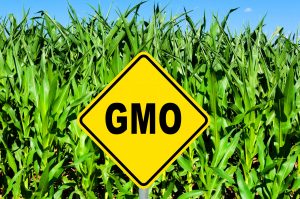 GMO Alarmist Nassim Taleb and his colleagues recently released a very anti-GMO working paper, and as a result, Taleb was invited to join a GMO debate organised by the Journal of Markets and Morality. He would have debated against science writer Ronald Bailey, who would have taken the pro-GMO stance.
GMO Alarmist Nassim Taleb and his colleagues recently released a very anti-GMO working paper, and as a result, Taleb was invited to join a GMO debate organised by the Journal of Markets and Morality. He would have debated against science writer Ronald Bailey, who would have taken the pro-GMO stance.
The debate, however, did not happen, as Nassim backed out. In response, Bailey published a rebuttal of Taleb and Co.’s working paper, which is the subject of this entry. Bailey addresses several of Taleb’s more egregious claims, namely that biotech crops will lead to catastrophic ruin in terms of negative effects on the surrounding environment and on human health.
Bailey discusses the so-called negative effects that GMO pest- and herbicide resistance genes have on humans and the surrounding environment. He notes that decades of research have shown that these genes are both safe to eat for humans, as well as other vertebrates. Additionally, Bailey cites 1000+ different scientific studies that had not detected any significant environmental hazard as a result of GM crops. He concludes his argument by listing some of the scientifically proven benefits of biotech crops, such as a reduction of chemical pesticide use by 37% and increased crop yields by 22%, among others.
Bailey makes a point to refute Taleb and Co.’s assertion that GMOs have an inherent “systematic risk”, referring to the fear that GMOs will spread and take over other, unallocated swathes of land, including non-agricultural areas such as forests. Bailey explains that the very process of artificial selection that is characteristic of GMOs lead to the inability of their crops being able to survive in the wild. Furthermore, Bailey states that the (minor) effects GMOs might have on their surrounding environment are no different and no more likely to occur than the effects traditional crops have on their surrounding environment.
Finally, Bailey addresses Taleb and Co’s claim that GMOs are detrimental to human health. The former expresses a belief that the tests required by the FDA in the United States are flawed and therefore neither accurate nor trustworthy. Bailey thinks otherwise; these tests are run on both animals and human cells, and a safety report must be given to the FDA before a food is allowed to be sold and distributed.
We agree with much of Bailey’s rebuttal, since his points are largely backed by scientific evidence, whereas Taleb and Co.’s standpoints come across as largely emotionally-fueled, anti-GMO rhetoric.
Read the full story here: “GMO Alarmist Nassim Taleb Backs Out of Debate. I Refute Him Anyway.“
Car Crash Survivor Becomes Soylent Believer
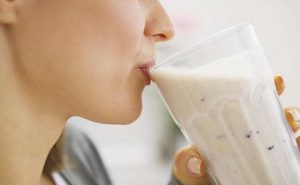
A young woman who just nearly survived a car accident found Soylent to be a big part of her life, even after she had recovered. After having to have hear jaw wired shut, she ordered a box of Soylent 2.0 and drank it exclusively throughout the duration of her recovery. However, even after becoming capable of eating “regular food”, she found that she still craved the taste of Soylent, its convenience, and time saving, describing it as her “fail-safe” option.
What’s so great about this article, and about the story in general, is that it shows someone who started drinking Soylent out of necessity and who eventually stuck with it out of free will and convenience. That’s right folks; meal alternatives like Soylent and Queal have many, many different uses!
We are aware that Queal is not only a convenience for many people, but also a kind of “life-saver”, as one of our customers very eloquently put it. Being able to offer people a product that not only saves them time, money, and energy, but also helps those with eating problems, be they physical or mental, is a really great feeling.
Read the full story here: “When I lost the ability to eat solid food, I tried Soylent – now I’m a believer“
But What Do You Think?
Have any thoughts on our reading from this week? Go ahead and share them in the comments section!
—
3 Things We’ve Been Reading This Week
For this week’s Community Series blog, we examine some serious flaws in our perception and consumption (and waste) of food, as well as discuss the possibility of meal replacements in college cafeterias. Here we go!
Could Soylent Become Part of the NYU Meal Plan?
 Source: Her Campus
Source: Her Campus
College meal plans very often consist of to-go boxes and a variety of fruits and vegetables that students and teachers can take with them on the go. In essence, an institution’s meal plan is a reflection of the kinds of people who inhabit its hallways and classrooms. Could Soylent, and other meal replacements, fit into these typically sandwich and fruit meal plans?
As it so happens, students at NYU and other universities across America have voiced their enthusiasm for Soylent becoming an available staple on their university’s meal plan. Several universities, including NYU, are very sensitive to the different diet needs and wants of their students and staff. NYU is especially accommodating when it comes to offering a variety of choice. So wouldn’t adding Soylent to the list of lunches and dinners-to-go seem like a great idea? Well, yeah.
Customers of Queal in Europe are also voicing their need for a better food solution at their universities and at work. At the moment, the cheapest foods are the ones that are also the worst in terms of health. A powdered food in the cafeteria could revolutionise the health of millions.
Rob Rhinehart, co-founder & creator of Soylent, has voiced his hope that one day Soylent will be available from vending machines, and even out of the tap. Though it is a stretch to imagine those things happening in the near future, a big step in that direction would be the implementation of Soylent, and other similar meal replacements, into the socially accepted diet of college meal plans. Students get hungry too, you know.
Read the full article here: College Meal Plans Should Include Meal Replacements
The Long Journey Ahead For “Tech-Enabled Food”
 Source: FOOD TECH
Source: FOOD TECH
Some habits are really, really hard to break. Of course, the first habits that probably come to mind are most likely cigarettes, alcohol, or unfortunate and persistence personality quirks. However, people tend to underestimate the power of food habits. Our food habits have become part of a long-standing tradition that, as fantastic as they are, are now appearing to stymie many potentially great developments in the food industry.
Though the costs of revolutionary technologies such as synthetic biology and tissue engineering are slated to become less expensive in the coming years, consumers are finding it difficult to overcome their habit-dictated food perceptions. And that, right there, is proving to be one of the biggest roadblocks for tech-enabled food.
A study conducted by Innovation Endeavors found that though consumers care most about nutrition, taste, and cost, more than half would not be willing to try cultured meat or synthesised milk. On top of that, the ongoing GMO debate, especially centring around the U.S. F.D.A, has split consumers down the middle in terms of what should be acceptable in terms of food technology.
Here at Queal, we’ve noticed that the hesitant people in Europe are in fact wary of the idea of powdered food, even though they are fully aware of what the product contains and what they would be putting in their body, something that is often missing from traditional food labelling. However, that being said, acceptance for powdered food meal replacement keeps growing and growing, and with any luck, will reach a normal level of social acceptance in the years to come.
Read the full story here: Are We Ready for the Future of Food?
How ‘Ugly’ Fruits and Veggies can Save the World
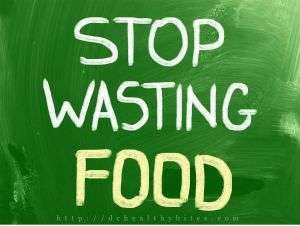 Source: DC Healthy Bites
Source: DC Healthy Bites
800 million people suffer from hunger around the world. At the same time, we throw away 2.9 trillion pounds a year. That is enough to feed 800 million people, twice over. A part of this waste comes from conservation issues, refrigeration, and lack of good roads. But a large part of the problem is us; we don’t like ugly produce.
Nowadays we’ve become more and more aware of this problem. In schools we’ve begun organising rallies to save the 40% of food that is wasted. In grocery stores we now sell crooked cucumbers. And in local markets people are beginning to buy fruits that don’t look like perfect copies from a magazine.
There is a lot happening with the future of food, and reducing waste is one of the aspects. Let’s make sure to put in our own effort too.
Read the full story here: Global Food Waste – is a Waste!
But What Do You Think?
Have any thoughts on our reading from this week? Go ahead and share them in the comments section!
—
4 Things We’ve Been Reading This Week
For this week’s Community Series blog, we look at a range of topics related to food production, consumption, and its effect on our bodies. From new techniques to genetically altering plants and animals, to considering future food as medicine, to food innovations we’re expecting in 2016, to a university study on the effects of Soylent on the human microbiome composition, we discuss the four best thing’s we’ve been reading this week!
CRISPR-Cas9: A Leap in Genome Editing Technology
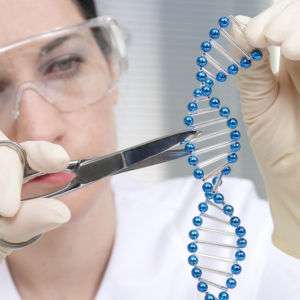 Source: Boston Children’s Hospital
Source: Boston Children’s Hospital
CRISPR-Cas9 is a technique that gives us the ability to alter the genetic material inside a plant or animal with speed and accuracy. CRISPR does this by making precise mutations by substituting existing DNA sequences with desired ones. It can also introduce new strains of DNA and therefore have a very big influence on the genetic make-up of all living things.
The technique has made it possible to make wheat that are resistant to fungi. Or make grains that can live longer through droughts. Pigs that are more resistant to a virus have also seen the light of day. Everything from cows without horns, to chickens that produce only females; it’s all a (very near future) possibility.
The precision of CRSIPR is both its largest advantage as well its downside. It allows for specific editing in DNA, but still can’t exclude environmental factors and interactions. And with crops that can withstand larger amounts of pesticides, what does it mean for sustainability?
CRISPR is an exciting technology that is certainly food for thought and will keep scientists and philosophers busy for many years to come.
Read the full story here: CRISPR is Coming to Agriculture – With Big Implications for Food, Farmers, Consumers and Nature
Food as Medicine?
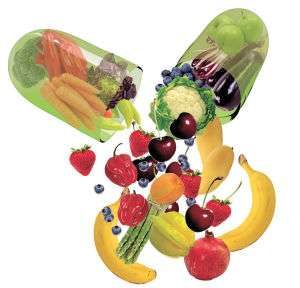 Source: DEVOUR
Source: DEVOUR
World-renowned scientist and professor of the University of Cape Town Tim Noakes has been taken to court by the Health Professions Council of SA over his suggestion to a mother, via social media, that the best types of food to give her infant are low-carb and high-fat.
According to Noakes and his supporters, the hearing is suggestive of a larger issue in global health, namely the insistence of praising high-carb, low-fat foods, while simultaneously making a fortune off of selling drugs to treat illnesses that are stemming from these high-carb, low-fat diets.
In this review of the first part of Noakes’ hearing, issues such as the evolution of diet, the healthiness of cereals and grains, insulin resistance, and cancer as a metabolic disease are discussed in depth.
Agreement with some or all of Noakes’ claims is up for debate, yet we fully support the fact that he has many fascinating insights and some very important things to say about the food industry at large.
The Future of Food: The Food Innovations of 2016
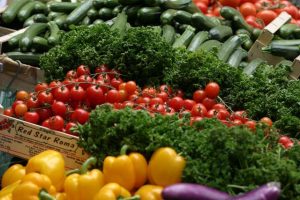 Source: CDN
Source: CDN
What will food x innovation bring us in 2016? That is what WIRED asked 6 experts in the field. From Nicola Twilley, co-host of the Gastropod podcast to Helen Rosner, Features Editor at Eater, each expert predicted what trends they see happening.
More mindfulness in eating, at home or at restaurants is one of the trends for this year. We will eat less meat and focus on having more (still great) meals that are vegetarian. Another prediction is that the probiotic food movement will be taking off even more.
Further in the WIRED magazine (or online edition), and for those of you who are interested in the possibilities of LED in agriculture, there is also a great article about hydroponic farming. It highlights a farm that lies 33 metres below London, using LED instead of light to help the plants grow.
Read the full story here: Six Experts on the Future of Food – WIRED
Drink-Based Meal Replacements and Their Effects on Our Microbiome
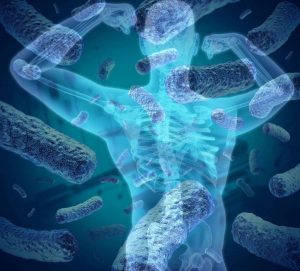 Source: Brevis
Source: Brevis
Over the last couple of years, many people have turned to drink-based meal replacements in order to satisfy their often-complex nutritional needs. Though individual observations of personal health have been, and have remained, extremely positive, there has never been an extensive study on how powdered food meal replacements affect the human body.
A team of four undergrad students from UC Berkeley recently announced their plans on a project that will study the impact of Soylent consumption on the human microbiome composition. They have recently become entirely funded through donations on their website, and have begun their project that will study Soylent’s effect on the human microbiome by examining their subjects before, during, and after usage.
Do you think it’s important to learn more about Soylent’s effect on our microbiome? What kinds of things do you think the results of this project could potentially yield? We curiously await the results of this ambitious project and think it will give a very interesting and insightful look into the impact drink-based meal replacements have on the human microbiome.
Read the full article here: Impact of Soylent Consumption on Human Microbiome Composition
But What Do You Think?
Have any thoughts on our reading from this week? Go ahead and share them in the comments section!
What We’re Talking About This Week
This week, we’re talking about food shortage, waste, and sustainability. We will cover food waste per world region, how governments and businesses are combating daily food waste and a new development in food tech that is focused on photosynthesis and increasing crop yields. Let’s jump right in!
Food Waste By Region
Tech Insider has compiled an overview of the biggest food wasters from around the world by region:
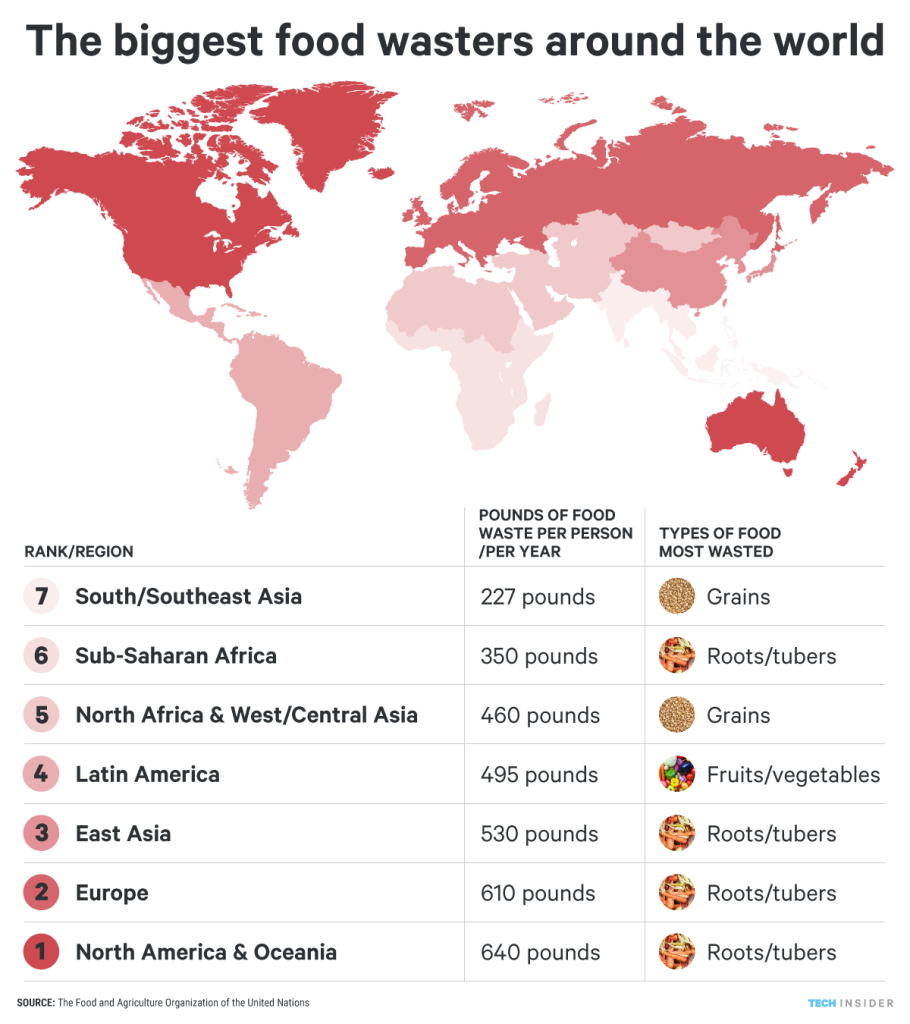 Not surprisingly, North America/Oceania and Europe are the two largest regions in which food waste has reached a fever pitch. In the category of roots/tubers, North American/Oceania and Europe waste a combined total of 1,250 pounds of food per person per year. The implications of that are staggering.
Not surprisingly, North America/Oceania and Europe are the two largest regions in which food waste has reached a fever pitch. In the category of roots/tubers, North American/Oceania and Europe waste a combined total of 1,250 pounds of food per person per year. The implications of that are staggering.
Meanwhile, regions like Southeast Asia and Sub-Saharan Africa are two of the regions responsible for the least amount of food waste, with a combined total of about 577 pounds of food waste per person per year. That is less than half of what North American and European countries are wasting.
Clearly, it seems that the more developed countries (and I am generalising here) are wasting the most food. Why is that?
Tech Insider reports that one of the biggest problems is due to the competition between farmers and supermarkets. We as consumers have a deep-rooted cosmetic bias for unbruised produce. This bias forces farmers to throw away any produce that does not meet these cosmetic standards, since they know consumers will prefer the cosmetically superior produce from supermarkets instead.
What, then, can be done to battle these rising numbers in food waste?
Read the full story here: “These countries are the biggest food wasters around the world”
Starbucks, And Other Major Players, Are Stepping Up
Contrary to what many people think, food sellers and producers are perhaps even guiltier than individuals when it comes to food waste. The food waste at supermarkets is enough for anyone to lose faith in the longevity of humanity. However, some companies who are not particularly known for any noteworthy sustainable practices, are stepping up to fix these issues.
 Starbucks, for one, has become the newest company to crack down on food waste. According to Tech Insider, around 13,700 sandwiches, yoghurts, and cookies were thrown away at every Starbucks every day. Yes, learning that made me just as depressed as you probably are now.
Starbucks, for one, has become the newest company to crack down on food waste. According to Tech Insider, around 13,700 sandwiches, yoghurts, and cookies were thrown away at every Starbucks every day. Yes, learning that made me just as depressed as you probably are now.
However, on March 22, Starbucks announced that it will be donating all unsold food from its US locations. They have partnered with Food Donation Connection (FDC) and Feeding America, who in turn redistribute the donated food to pantries. The FDC also works with Target and Walmart, who also donate food.
It’s not just the US either; Europe has now started to combat food waste on a larger scale. Recently, the French parliament introduced a bill that forbids supermarkets from throwing away unsold food, and instead to donate it.
Read the full story here: “Starbucks is donating all of its unsold food to charity”
New Photosynthesis Development In Food Tech
While larger corporations are combining their efforts to stop food waste and address food shortage, food tech is looking into how we will be feeding the planet in the near future. It has been reported that by 2050, we will have to be producing 60%-110% more crops in order to feed our ever-growing population.
Scientists are now looking into a new way of manipulating photosynthesis to increase crop yields. In summary, the enzyme rubisco, which plays a major part in the rate of photosynthesis, traps CO2 during the process. This carbon fixing creates carbohydrates.
 Scientists have discovered that under high temperatures, rubisco can accidentally use oxygen instead of CO2, which ends up releasing CO2 back into the atmosphere. They have already managed to increase carbohydrate production in tobacco plants using this method and without the use of extra fertiliser. The next step will be to test on food crops, and hopefully an increase in crop yields.
Scientists have discovered that under high temperatures, rubisco can accidentally use oxygen instead of CO2, which ends up releasing CO2 back into the atmosphere. They have already managed to increase carbohydrate production in tobacco plants using this method and without the use of extra fertiliser. The next step will be to test on food crops, and hopefully an increase in crop yields.
Read the full story here: “We’re running out of time to prevent the world from starving”
We are really excited to see that big corporations are starting to realise the importance of sustainability and the dangers of food waste and shortages. As a sustainable company ourselves, it’s great to see that others are taking initiative and working towards a global shift in attitude towards food and food production.
But What Do You Think?
Have any thoughts on our reading from this week? Go ahead and share them in the comments section!
Join our list and receive our Future Food ebook for free.



No Comments